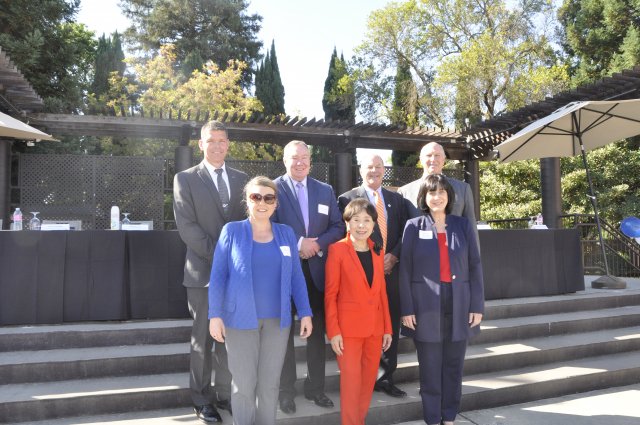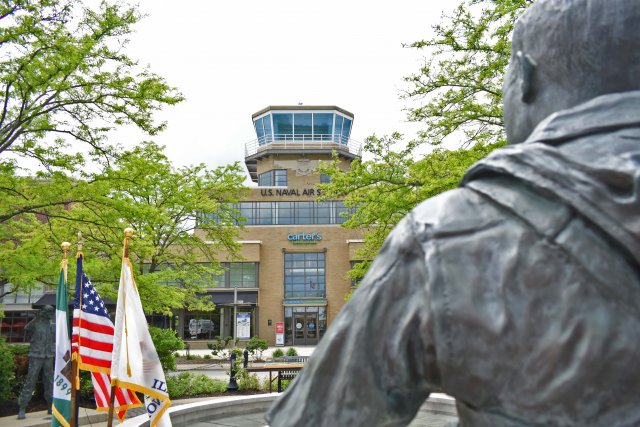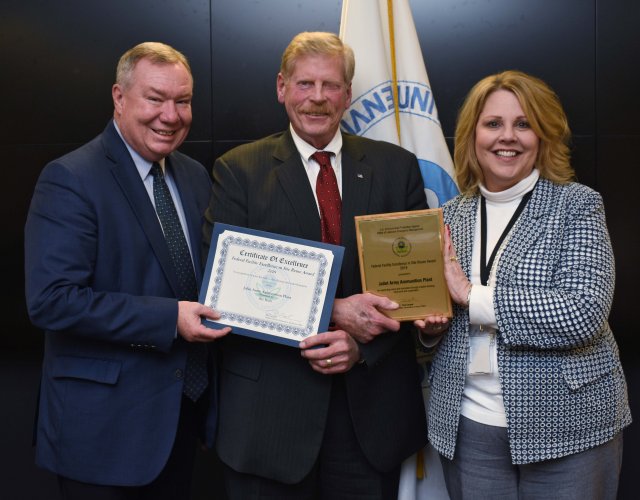First Annual 'National Federal Facility Excellence in Site Reuse' Awards
Awardees

First Annual "National Federal Facility Excellence in Site Reuse" Awardees
EPA Announces the First Annual “National Federal Facility Excellence in Site Reuse” Awards
These awards recognize the hard work, innovative thinking, and cooperation among federal agencies, states, tribes, local partners, and developers to encourage restoration of federal sites for beneficial reuses. Cleaning up contaminated sites at federal facilities can serve as a catalyst for economic growth and community revitalization.
Awards were provided in four categories: National Priorities List (NPL) Base Realignment and Closure (BRAC) sites; NPL sites, non-NPL sites; and non-NPL BRAC sites.
The first annual “Federal Facility Excellence in Site Reuse” award winners are:
| Category | Awardee |
|---|---|
| NPL BRAC | Former McClellan Air Force Base (R9) |
| Non-NPL BRAC | Naval Air Station Glenview (R5) |
| NPL | Joliet Army Ammunition Plant (R5) |
| Non-NPL | Tysons Valley Powder Farm (USACE) (R7) |
(1 of 5)

Former McClellan Air Force Base, Sacramento County, California NPL BRAC
In 2007, Sacramento County and the U.S. Air Force signed the first monumental agreement allowing for rapid cleanup and early land transfer at McClellan. This was a first in the nation for the Department of Defense, transferring contaminated land, money and authority to perform cleanup at a National Priority List site. The combined efforts of the BRAC Cleanup Team, McClellan Business Park, Sacramento County and the community have led to the transformation of McClellan Air Force Base into one of California’s most unique corporate communities, bringing jobs and economic growth to the region. Video of ceremony.
(2 of 5)

Naval Air Station Glenview (The GLEN), Illinois non-NPL BRAC
Following the closure of the Air Station, the Village and Illinois EPA partnered to expedite the redevelopment of the 1,121 acre site. The restoration began in 1993 with the formation of a three-member BRAC cleanup team, comprised of the U.S. Navy, U.S. EPA and Illinois EPA, to manage clean-up efforts. The $25 million cleanup effort allowed for the transfer of large tracts of land beginning in late summer 1997 and the transfer of 100 percent of the land by 2002.
The remedy consisted of cleaning the entire property to a residential use standard providing ultimate flexibility to implement the community reuse plan for mixed-use development. Projects included: a new Metra commuter station, over 2,200 residential units, 2-million square feet of office and retail, over 400 acres of green space, a 165,000 square foot community center, new post office, police station, fire station, middle school, and public safety training academy. Video of ceremony.
Photo credit: Toby Wall, US EPA, Region 5
(3 of 5)

Joliet Army Ammunition Plant, Illinois NPL
When the Joliet Army Ammunition Plan was in operation, the chemical processes and discharges were highly industrialized yet today the property has been carefully and thoughtfully designed for beneficial reuse. The former Joliet Army Ammunition Plant has been transformed into multiple beneficial use areas for the community, including a Veteran’s Cemetery, economic redevelopments, transportation hub, and natural resource conservation areas, which includes, public land for the community to enjoy; the largest contiguous open space for bird habitat in northeastern Illinois; and conservation of threatened and endangered species, habitat and rare prairie ecosystems.
Photo credit: Toby Wall, US EPA, Region 5
(4 of 5)

Tysons Valley Powder Farm, Missouri non-NPL
The Tyson Valley Powder Farm was originally a 2,620 acre facility used from 1945 through 1950, then again in 1951 through 1963 by the Department of Defense. This site was used to support the St. Louis Ordnance Plant, mainly for storage and as a testing facility for ordnance. Now, the site hosts Washington University Tyson Research Center Endangered Wolf Center, Lone Elk Park, and a World Bird Sanctuary.
(5 of 5)
